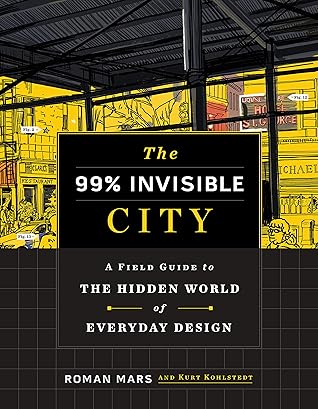More on this book
Community
Kindle Notes & Highlights
by
Roman Mars
Read between
October 6 - October 26, 2020
Instead of falling over (potentially onto a vehicle or into a lane of traffic), a telephone pole can be designed to break off at its base and then swing up and out of the way before coming to a stop and hanging in place while the cables linking it to neighboring poles hold it up temporarily.
A test tunnel hundreds of feet long was enclosed inside an abandoned mine to try out ventilation strategies. Additionally, a group of Yale University student volunteers spent hours in airtight chambers while researchers pumped carbon monoxide inside to determine human tolerances and side effects.
The result is a kind of architectural scar tissue—as if the built environment were filling in and healing old wounds.
Infill architecture retains the shapes of old voids, inadvertently preserving large traces of local urban history.
employed. In 1973, the government mandated through a cabinet order that traffic lights use the bluest shade of green possible—still technically green, but noticeably blue enough to justifiably continue using the ao nomenclature.”
French writer Françoise Bastide and Italian semiotician Paolo Fabbri advocated another solution involving genetically engineering bioluminescent cats that would glow in the presence of radioactivity. By creating songs and traditions about the danger of these glowing felines, the warning would theoretically be preserved by one of the oldest relics of civilization we have: culture.
trains. Starting in the mid-1800s, subsidies from the post office to secure space for mail provided regular income for train networks and helped the rail system expand at a rapid pace. Postal subsidies also kept the aviation industry aloft after World War
Billions of tons of sand are mined each year just for construction purposes.
The increasing scarcity of sand and the growing recognition of concrete’s role in climate change has led designers to consider other materials both old and new.
There is a lot to criticize about the global culture of planned obsolescence, but even well-built things eventually become obsolete. In that light, employing more deliberate, considerate, and sustainable deconstruction methods can offer old architecture a more graceful way to permanently exit the built environment.
Today, grass is the most irrigated crop in the United States. “Even conservatively,” estimates research scientist Cristina Milesi, “there are three times more acres of lawns in the U.S. than irrigated corn.”
By some estimates, as many as a fifth of all power outages are squirrel related. Squirrels
Renowned for its bustling nightlife, the St. Pauli district in Hamburg has long had issues with unpleasant street smells and stained walls. So a group of local businesses got in touch with the inventors of a special hydrophobic paint that would bounce liquids back at urinators. They sprayed coats of this paint on the sides of buildings along with signs reading, HIER NICHT PINKELN! WIR PINKLEN ZURüCK. (“Don’t Pee Here! We Pee Back.”)


